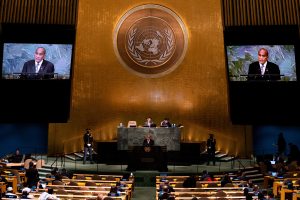In the three and a half years since the Treaty on the Prohibition of Nuclear Weapons (TPNW) entered into force, it has been signed by 93 countries and ratified by 70. In Asia, and across Oceania, nations large and small – Mongolia, the Philippines, New Zealand, Fiji, and Malaysia, to name a few – have acceded to the first legally binding international treaty that prohibits all aspects of nuclear weapons development, stockpiling, use, and threat of use.
Beginning with the first atomic bombs dropped on Japan in 1945 and continuing over five decades of testing, nuclear weapons have exacted a heavy toll in Asia and the Pacific, profoundly impacting public health and the environment, causing forced dislocation, and disrupting development, education, cultures, and economies. Today, even as all nine nuclear-armed nations maintain and modernize their arsenals, people of the Asia-Pacific region continue to shoulder the burden of multi-generational nuclear trauma.
With all but two (France and the United Kingdom) nuclear-armed states located in Asia or the Pacific region, nuclear weapons represent a tangible threat to this part of the world where the Korean Peninsula, Taiwan Strait, Kashmir, and South China Sea are all considered potential flashpoints.
Speaking in March at a Security Council meeting on nuclear disarmament and non-proliferation, United Nations Secretary General Antonio Guterres said the risk of nuclear war was at “its highest point in decades.”
Guterres warned that nuclear weapons are “growing in power, range, and stealth,” saying that “an accidental launch is one mistake, one miscalculation, one rash act away.” He criticized the nine nuclear armed states for being “absent from the table of dialogue.”
In recent years, frustration over the lack of progress on the Treaty on the Non-Proliferation of Nuclear Weapons (NPT), has fueled discontent and recognition of the need for a broader, more inclusive mechanism for ridding the world of nuclear weapons. In particular, there’s growing criticism of the failure to advance Article VI of the NPT which states:
Each of the Parties to the Treaty undertakes to pursue negotiations in good faith on effective measures relating to cessation of the nuclear arms race at an early date and to nuclear disarmament, and on a treaty on general and complete disarmament under strict and effective international control.” (emphasis added)
As proponents of nuclear abolition watch nuclear arms control treaties falter, wither, and face withdrawal, enthusiasm for an alternative international pathway to disarmament has been directed at TPNW. As of May 2024, 10 countries in the Pacific and 13 in Asia have ratified the treaty, with more working through the process.































